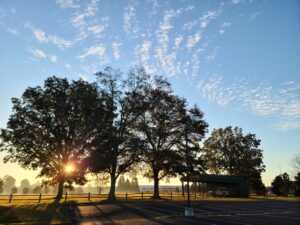Part 2- Tree Care Basics: Honoring 10 Years of Sanford Being a Tree City USA
go.ncsu.edu/readext?967177
en Español / em Português
El inglés es el idioma de control de esta página. En la medida en que haya algún conflicto entre la traducción al inglés y la traducción, el inglés prevalece.
Al hacer clic en el enlace de traducción se activa un servicio de traducción gratuito para convertir la página al español. Al igual que con cualquier traducción por Internet, la conversión no es sensible al contexto y puede que no traduzca el texto en su significado original. NC State Extension no garantiza la exactitud del texto traducido. Por favor, tenga en cuenta que algunas aplicaciones y/o servicios pueden no funcionar como se espera cuando se traducen.
Português
Inglês é o idioma de controle desta página. Na medida que haja algum conflito entre o texto original em Inglês e a tradução, o Inglês prevalece.
Ao clicar no link de tradução, um serviço gratuito de tradução será ativado para converter a página para o Português. Como em qualquer tradução pela internet, a conversão não é sensivel ao contexto e pode não ocorrer a tradução para o significado orginal. O serviço de Extensão da Carolina do Norte (NC State Extension) não garante a exatidão do texto traduzido. Por favor, observe que algumas funções ou serviços podem não funcionar como esperado após a tradução.
English
English is the controlling language of this page. To the extent there is any conflict between the English text and the translation, English controls.
Clicking on the translation link activates a free translation service to convert the page to Spanish. As with any Internet translation, the conversion is not context-sensitive and may not translate the text to its original meaning. NC State Extension does not guarantee the accuracy of the translated text. Please note that some applications and/or services may not function as expected when translated.
Collapse ▲Trees are important investments in a landscape, garden or property. They provide so many different ecosystem services for humans and the local ecosystem. For them to reach their full genetic potential though, we need to help them get off to a good start from the beginning. Proper planting at the beginning of a tree’s life in your landscape can make or break it in the long-term.
Proper planting
Most trees are best planted in fall, from September to December, because the temperatures are cooler and we have more rain. If that timing is not possible, that is okay, but it will take more work to keep trees alive. It is highly discouraged to plant trees from May to August, due to our hot summers. Our summers are generally stressful to plants anyway, and putting a tree in a situation where it needs to grow roots AND leaves AND try not to die from the heat is the best thing you can do. Semi-tropical trees, like Magnolias and redbuds, can successfully be planted from February to April.
You should always do a soil test when planting in a new area to understand what is going on in the soil. The soil test is free through the NC Department of Agriculture and Consumer Services from April 1 to November 30, and boxes can be obtained at your local Cooperative Extension office. The test results will advise you on any soil amendments you need to add to optimize the growing conditions of the soil for your desired plant.
For the actual planting, dig a hold twice as wide and just as deep as the pot that the tree came in. If you have a lot of clay in your soil, consider preparing a larger area than the planting hole for your tree and mix in organic matter, like compost or soil conditioner, to break up the clay. Remove the
The only time you will need to “wrap” your new tree is if we are going to get below 28 degrees Farenheit for an extended period of time and/or are under a sleet/freeze warning. Otherwise, your tree will be fine in the cold, and, in fact, many trees need that cold for their normal functions.
Long-term maintenance
The first calendar year in your yard is one of the most important in a tree’s life. Trees should get about one inch of supplemental water a week the first year, and possibly more during times of drought, depending on the species and planting timing. After the first year, you should only need to water during times of extreme drought.
Make sure you are mulching properly on a 12-18 month basis with some sort of organic matter. This keeps the roots cool and holds moisture in the soil. It also builds soil through time!
Most pruning in a tree’s life should be done early on. Getting good branching angles and a strong central leader will help a tree develop a strong, low-maintenance

Tree Silhouette by Amanda Wilkins
branching system as it gets older. It is SO much easier to prune a young tree, than it is to have to climb and cut a large tree. DO NOT spray-paint or apply sealant to pruning cuts.
Rethink the little tree island in your turfgrass lawn. Trees and grass DO NOT get along. Keep turfgrass away from the root zones of all trees, as most turf species’ roots are more effective at getting nutrients and water than tree roots. You may notice your tree suffering through time, despite your best care efforts, because of this.
After the first few years in your landscape, your tree should need minimal inputs. You should always make sure it is branching well and routine pruning will save you a lot of money in the long run. Do a soil test every three years to make sure there are no fertilizer amendments needed. Provide supplemental water during times of extreme drought, if you can. Doing all this will help your tree grow and be its best and most beautiful.




